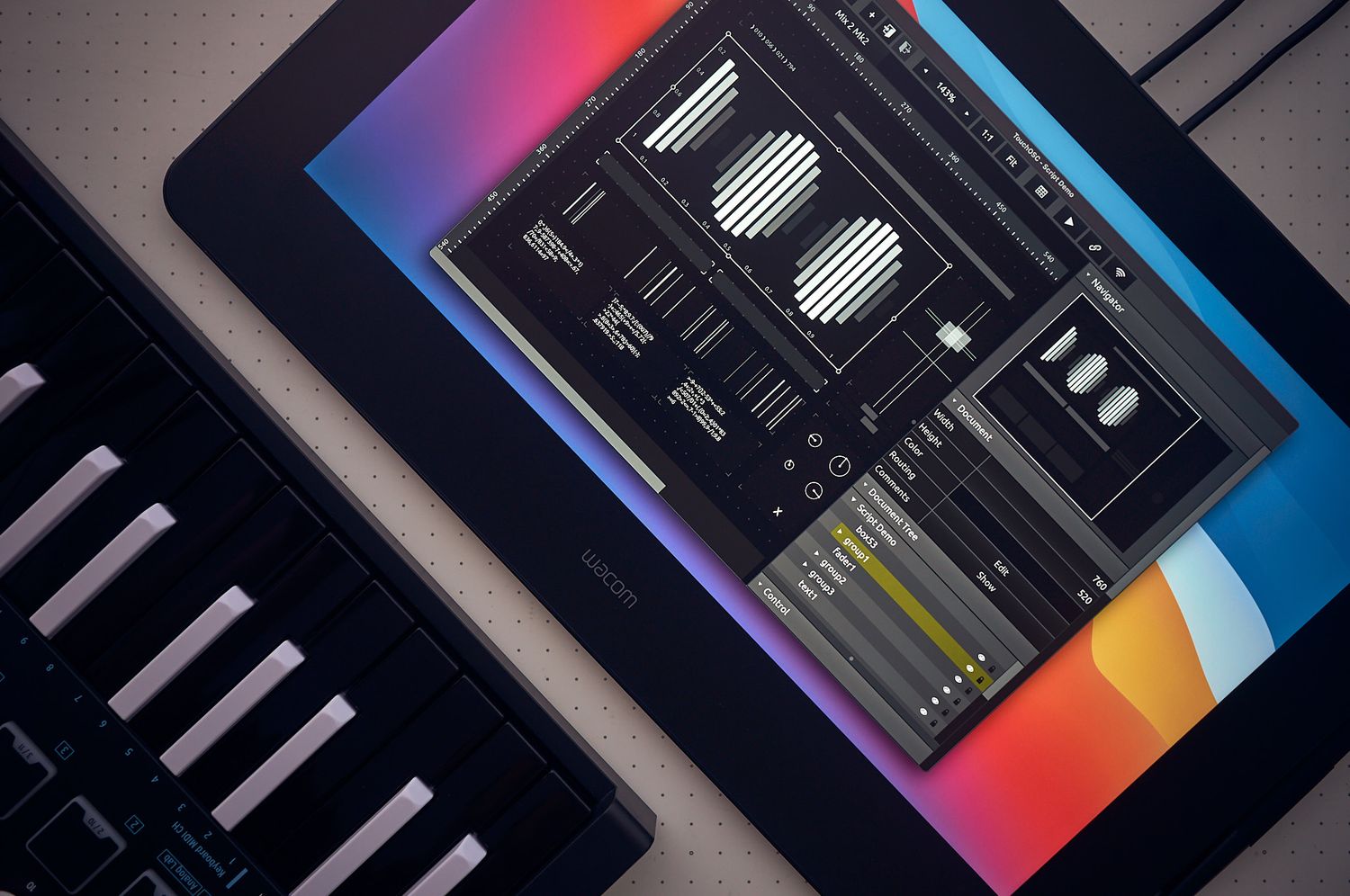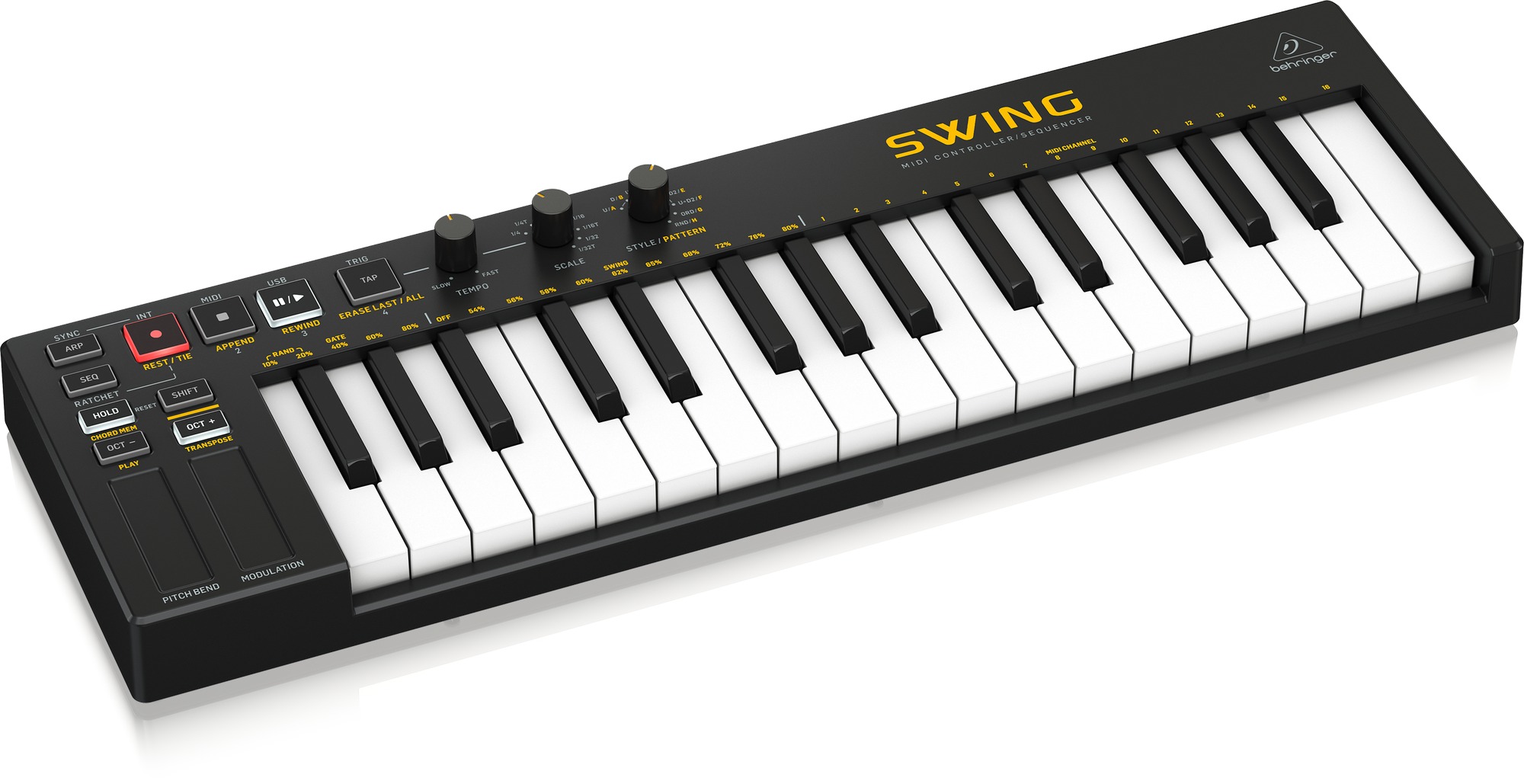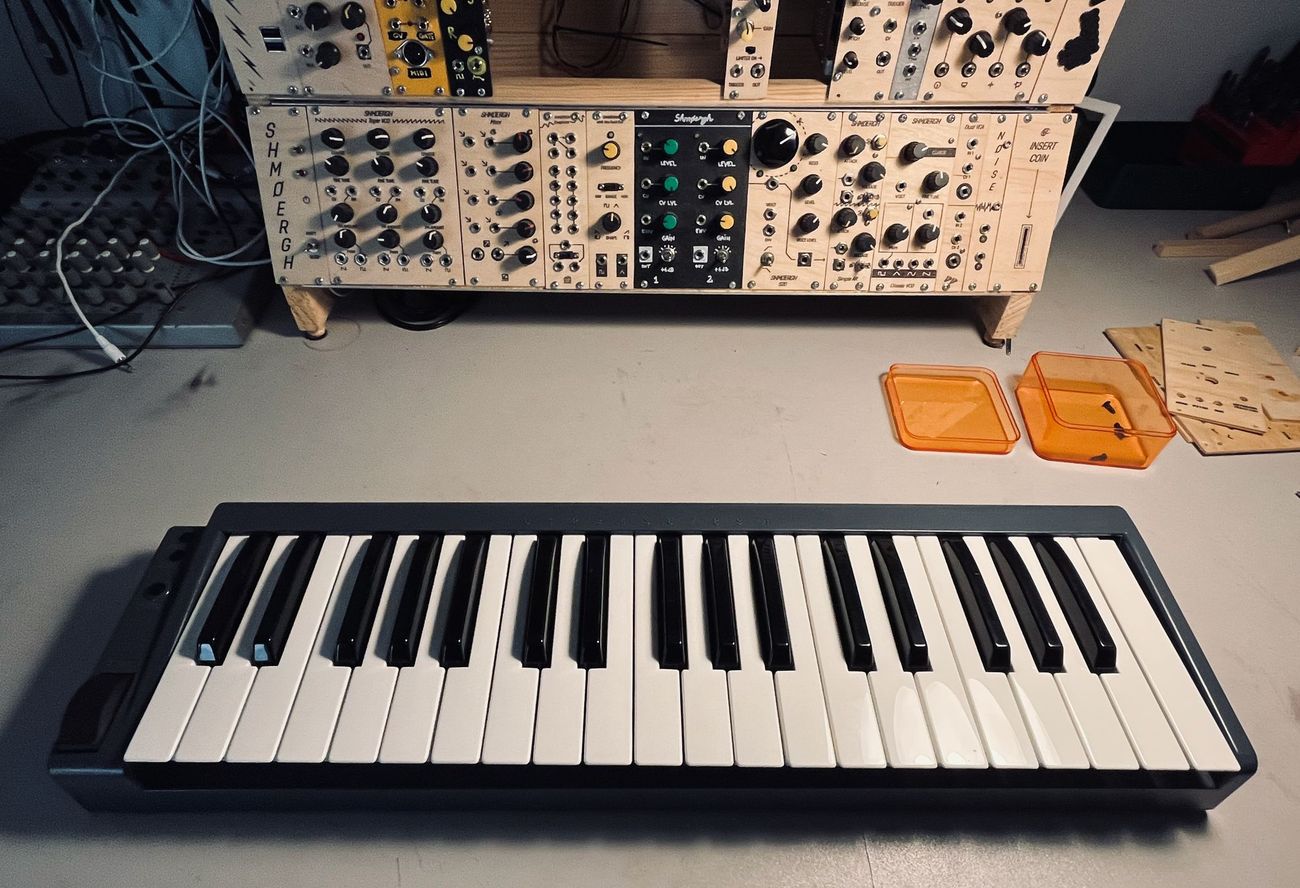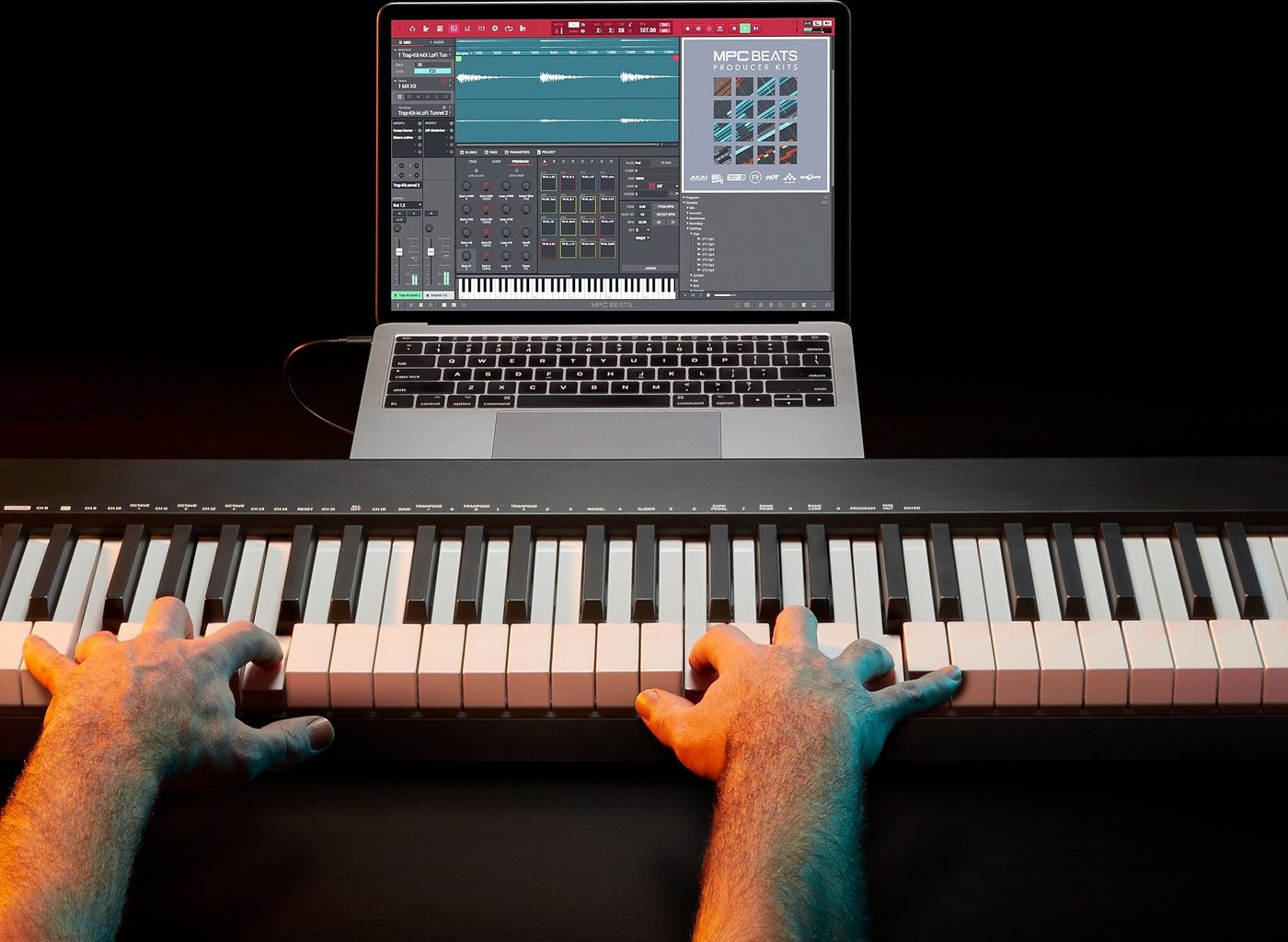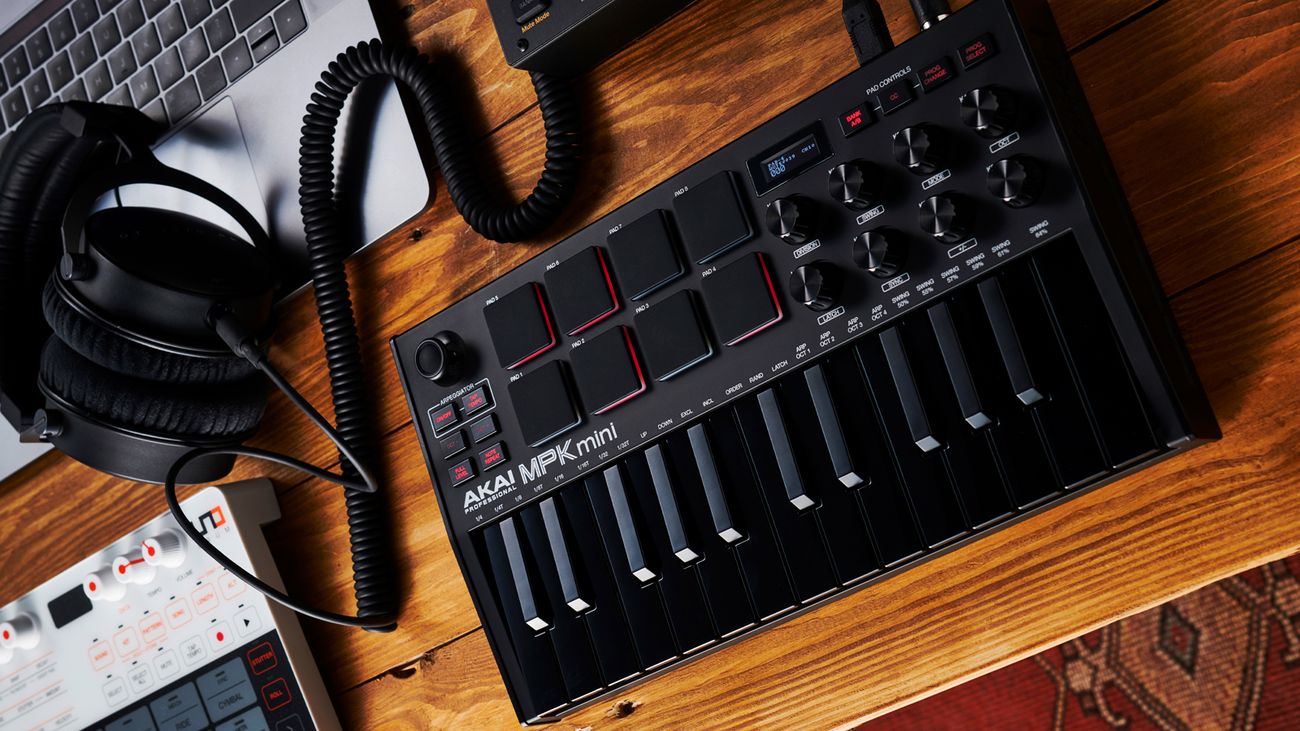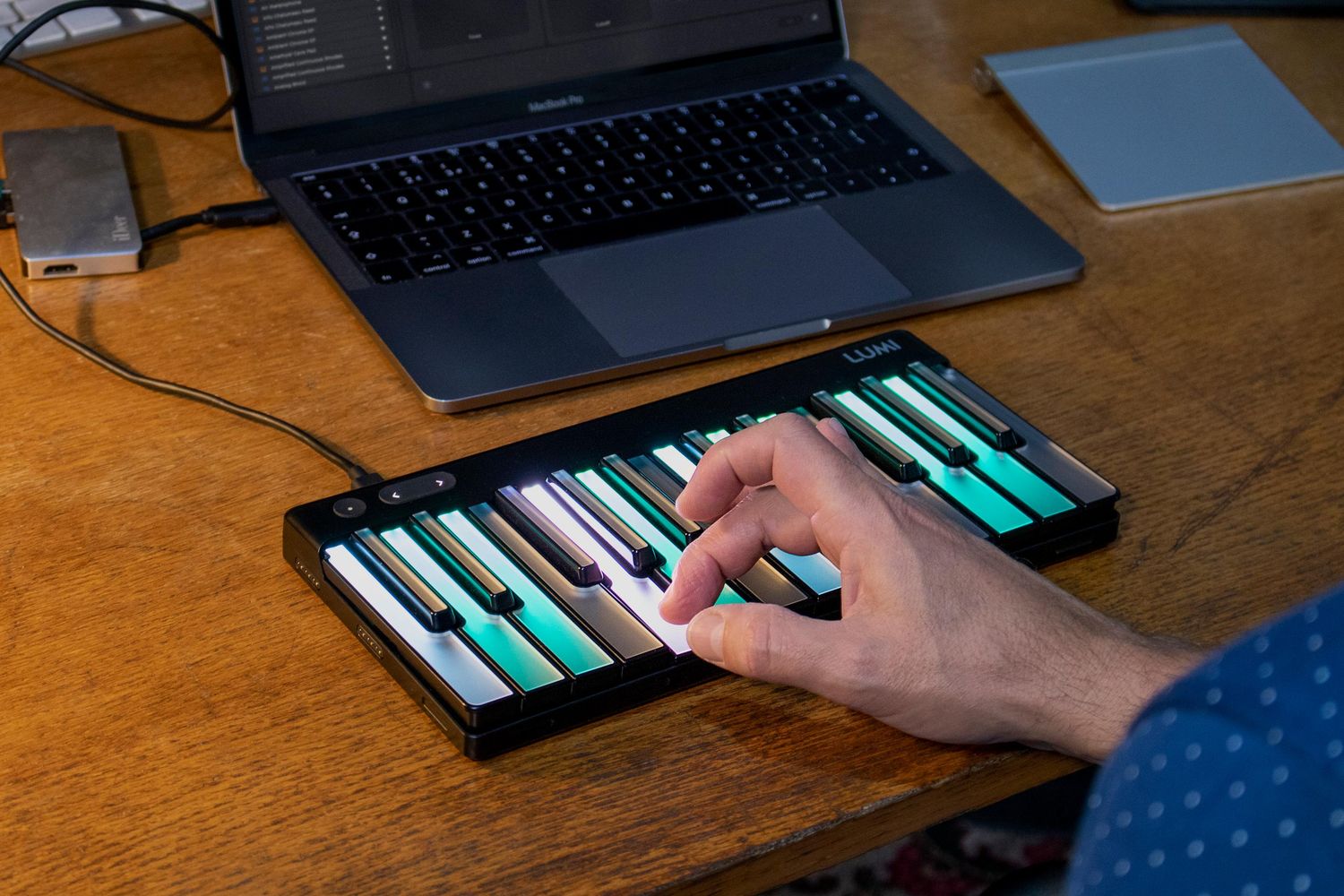Home>Production & Technology>MIDI>How To Add MIDI Keyboard To Reason
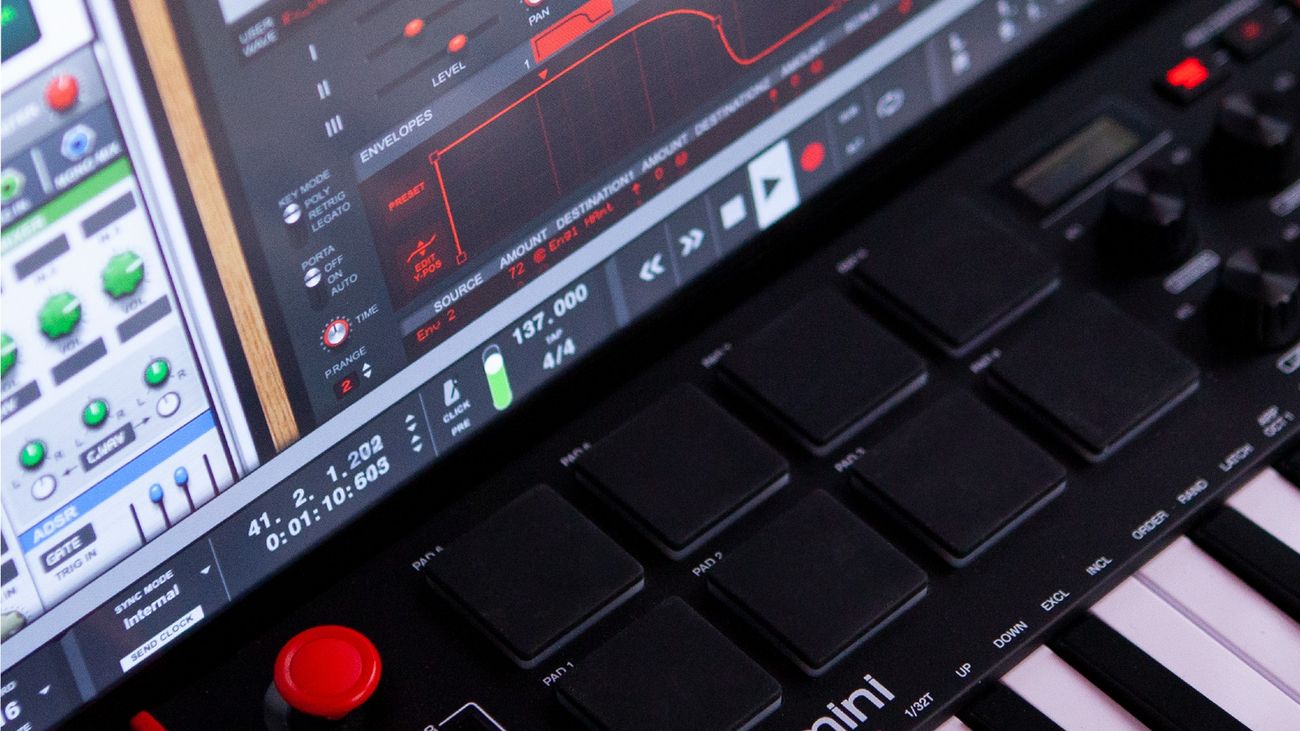

MIDI
How To Add MIDI Keyboard To Reason
Published: February 22, 2024
Learn how to easily connect and use a MIDI keyboard with Reason to enhance your music production. Follow our step-by-step guide for seamless integration.
(Many of the links in this article redirect to a specific reviewed product. Your purchase of these products through affiliate links helps to generate commission for AudioLover.com, at no extra cost. Learn more)
Table of Contents
Introduction
Adding a MIDI keyboard to your music production setup can significantly enhance your creative process and overall musical experience. Whether you're a seasoned producer or just starting out, integrating a MIDI keyboard with Reason, a popular digital audio workstation (DAW), opens up a world of possibilities for composing, arranging, and performing music.
The MIDI keyboard serves as a bridge between your musical ideas and the digital realm, allowing you to express yourself in a more intuitive and organic manner. By connecting a MIDI keyboard to Reason, you can leverage its extensive library of virtual instruments, effects, and production tools to bring your compositions to life.
In this comprehensive guide, we'll delve into the process of adding and configuring a MIDI keyboard within Reason, exploring the seamless integration of hardware and software to unlock your creative potential. Whether you're aiming to replicate the feel of a traditional piano, experiment with electronic sounds, or control various parameters in real-time, the MIDI keyboard serves as a versatile tool for musical expression within Reason.
As we embark on this journey, we'll cover the fundamentals of connecting your MIDI keyboard to your computer, configuring it within Reason, and harnessing its capabilities to interact with Reason's instruments and devices. Additionally, we'll provide valuable tips to optimize your MIDI keyboard setup, ensuring a smooth and productive workflow as you dive into the world of music production with Reason.
So, whether you're looking to lay down intricate melodies, craft dynamic chord progressions, or explore the boundless sonic palette of virtual instruments, this guide will equip you with the knowledge and insights to seamlessly integrate your MIDI keyboard with Reason, empowering you to unleash your musical creativity with confidence and precision.
Getting Started: Connecting the MIDI Keyboard
Connecting your MIDI keyboard to Reason is the initial step towards harnessing its full potential within the DAW environment. This process involves establishing a physical and digital connection, enabling seamless communication between the hardware and software components. Here's a detailed walkthrough to guide you through the setup process:
-
Physical Connection: Begin by locating the MIDI OUT port on your keyboard and the MIDI IN port on your audio interface or computer. Using a standard MIDI cable, connect the MIDI OUT port of your keyboard to the MIDI IN port of your audio interface or computer. Ensure a secure connection to prevent any signal interruptions during operation.
-
Power Up: Once the physical connection is established, power on your MIDI keyboard. Many MIDI keyboards draw power through the USB connection, eliminating the need for an external power source. However, if your keyboard requires a separate power supply, ensure it is connected and switched on.
-
Digital Interface: If your MIDI keyboard features USB connectivity, connect it to an available USB port on your computer. This allows for MIDI data transmission and, in some cases, provides power to the keyboard. If your keyboard lacks USB connectivity, rely on the MIDI connection for data transfer and a separate power source, if necessary.
-
Driver Installation (if applicable): In some instances, your computer may require specific drivers to recognize and communicate with the MIDI keyboard. Refer to the manufacturer's instructions or website to download and install the appropriate drivers for seamless integration.
-
Verification: Once the physical and digital connections are established, verify that your computer recognizes the MIDI keyboard. This can be confirmed through the Device Manager (Windows) or System Information (Mac), where the MIDI keyboard should appear as a connected device.
By following these steps, you can ensure a robust physical and digital connection between your MIDI keyboard and Reason, laying the foundation for a fluid and responsive interaction between the hardware and software components. With the MIDI keyboard successfully connected, you're now ready to delve into the configuration process within Reason, unlocking a myriad of creative possibilities for musical expression and production.
Configuring the MIDI Keyboard in Reason
Once your MIDI keyboard is physically connected to your computer, the next crucial step is configuring it within Reason to ensure seamless integration and optimal functionality. Reason provides a user-friendly interface for setting up and customizing MIDI devices, allowing you to tailor the keyboard's behavior to your specific workflow and creative preferences. Here's a detailed walkthrough to guide you through the configuration process:
-
Accessing Preferences: Launch Reason and navigate to the 'Preferences' menu. Within the preferences window, select the 'MIDI' tab to access the MIDI configuration settings.
-
Detecting MIDI Devices: In the MIDI preferences, click on the 'Control Surfaces and Keyboards' section. Reason automatically scans for connected MIDI devices, including your keyboard. Once detected, your MIDI keyboard will appear in the list of available devices.
-
Assigning MIDI Input: After the MIDI keyboard is recognized, you can assign it as a MIDI input device within Reason. This allows Reason to receive MIDI data from the keyboard, enabling you to play and control virtual instruments and devices.
-
Configuring MIDI Channels: Depending on your MIDI keyboard's capabilities, you can configure the MIDI channels it transmits data on. Reason allows you to specify the MIDI input channels for different purposes, such as controlling specific instruments or devices within your project.
-
Enabling Remote Control: If your MIDI keyboard features assignable knobs, sliders, or buttons, Reason provides the option to enable remote control mapping. This feature allows you to map the physical controls on your keyboard to various parameters within Reason, offering tactile control over software parameters.
-
Testing MIDI Input: To ensure that the MIDI keyboard is properly configured, play some notes on the keyboard and observe the MIDI activity within Reason. The MIDI input indicator within Reason should respond to your playing, confirming that the keyboard is successfully integrated and transmitting MIDI data to the software.
-
Customizing Key Mapping (Optional): For advanced users, Reason offers the ability to customize key mappings for specific MIDI controllers. This allows you to tailor the behavior of individual keys, pads, or other controls on your keyboard to suit your unique performance and production requirements.
By following these steps, you can effectively configure your MIDI keyboard within Reason, establishing a robust connection that empowers you to interact with Reason's virtual instruments and devices with precision and flexibility. With the MIDI keyboard seamlessly integrated and optimized within Reason, you're now equipped to explore the creative potential of combining hardware expression with the vast sonic capabilities of the DAW.
Using the MIDI Keyboard with Reason's Instruments
Harnessing the full potential of a MIDI keyboard within Reason involves leveraging its capabilities to interact with the diverse array of virtual instruments offered by the DAW. By seamlessly integrating your MIDI keyboard with Reason's instruments, you can unlock a world of creative possibilities, from expressive piano performances to dynamic synthesizer explorations. Here's a comprehensive exploration of how to effectively use the MIDI keyboard with Reason's instruments to elevate your music production experience.
Playing Expressive Melodies and Chords
With your MIDI keyboard configured and ready for action, you can effortlessly play expressive melodies and rich chords using Reason's virtual instruments. Whether you're drawn to the authentic sound of a grand piano, the lush textures of a string ensemble, or the evolving timbres of synthesizers, your MIDI keyboard serves as a tactile interface for translating your musical ideas into captivating performances. The sensitive key response and velocity sensitivity of the MIDI keyboard enable nuanced expression, allowing you to infuse your compositions with emotion and depth.
Real-Time Parameter Control
One of the key advantages of using a MIDI keyboard with Reason's instruments is the ability to control various parameters in real time, enhancing the dynamic nature of your musical performances. Many of Reason's instruments offer assignable parameters such as filter cutoff, resonance, envelope settings, and effects controls. By mapping these parameters to the knobs, sliders, and modulation wheels on your MIDI keyboard, you can manipulate sound textures and sculpt sonic landscapes with precision and spontaneity, adding a layer of live performance dynamics to your productions.
Drum Programming and Performance
Beyond melodic and harmonic expression, your MIDI keyboard can also serve as a versatile tool for drum programming and performance within Reason. With the aid of drum machine and sample-based instruments, you can use the pads or keys on your MIDI keyboard to trigger drum sounds, sequence rhythmic patterns, and add rhythmic accents to your compositions. This intuitive approach to drum programming empowers you to infuse your beats with a human touch, allowing for fluid and natural rhythmic variations that breathe life into your music.
Exploring Creative Sound Design
Furthermore, the integration of your MIDI keyboard with Reason's instruments opens up avenues for creative sound design and experimentation. Whether you're exploring the sonic possibilities of synthesizers, samplers, or modular devices, your MIDI keyboard serves as a tactile canvas for shaping and sculpting sound. By leveraging the real-time control capabilities of your MIDI keyboard, you can delve into the depths of sound manipulation, modulating parameters, triggering samples, and crafting intricate soundscapes that reflect your artistic vision.
In essence, using the MIDI keyboard with Reason's instruments empowers you to infuse your music with expressive performances, dynamic parameter control, rhythmic intricacies, and innovative sound design. This seamless integration of hardware and software fosters a symbiotic relationship between the musician and the digital realm, bridging the gap between creativity and technology to elevate your music production endeavors. With your MIDI keyboard serving as a versatile conduit for musical expression, you're poised to embark on a sonic journey that transcends boundaries and sparks boundless creativity within the realm of Reason.
Tips for Optimizing the MIDI Keyboard Setup
Optimizing your MIDI keyboard setup within Reason involves fine-tuning various aspects to ensure a seamless and efficient workflow. By implementing the following tips, you can elevate your music production experience and harness the full potential of your MIDI keyboard integration with the DAW.
1. Key Mapping and Assignments
Take advantage of Reason's flexible key mapping features to customize the behavior of your MIDI keyboard according to your specific preferences. Assigning functions to individual keys, pads, or control elements allows for personalized interaction with Reason's instruments and devices. Whether it's assigning drum pads to trigger specific samples or mapping knobs to control synth parameters, tailored key assignments enhance your creative control and streamline your production process.
2. Velocity Curves and Sensitivity
Adjusting the velocity curves and sensitivity settings of your MIDI keyboard can significantly impact the expressiveness of your performances. Fine-tune these parameters to match your playing style and achieve optimal response from Reason's virtual instruments. By calibrating velocity curves, you can ensure that subtle nuances in your playing dynamics are accurately translated into nuanced musical expressions within your compositions.
3. MIDI Controller Mapping
Explore the extensive MIDI controller mapping capabilities within Reason to map your MIDI keyboard's controls to various software parameters. Whether it's linking modulation wheels to filter cutoff frequencies or assigning sliders to mixer controls, MIDI controller mapping empowers you to interact with Reason's features in a tactile and intuitive manner. This level of customization enhances your ability to shape and manipulate sounds with precision, adding a layer of hands-on creativity to your music production process.
4. Firmware and Driver Updates
Regularly check for firmware and driver updates for your MIDI keyboard to ensure compatibility and optimal performance within Reason. Manufacturers often release updates to address software compatibility issues, enhance functionality, and improve overall stability. By keeping your MIDI keyboard's firmware and drivers up to date, you can mitigate potential technical issues and ensure a seamless integration with Reason's ecosystem.
5. DAW Integration Features
Explore any specific integration features or functionalities offered by your MIDI keyboard that are tailored for use within Reason. Some MIDI keyboards are equipped with dedicated integration protocols or control surface modes designed to enhance their compatibility and performance within specific DAW environments. Leveraging these integration features can streamline your workflow and provide enhanced interaction with Reason's instruments and devices.
By implementing these optimization tips, you can fine-tune your MIDI keyboard setup within Reason, unlocking a higher level of creative control, responsiveness, and integration. These refinements not only enhance your music production experience but also empower you to explore new avenues of musical expression and innovation within the dynamic realm of Reason.
Conclusion
In conclusion, the integration of a MIDI keyboard with Reason transcends the conventional boundaries of music production, offering a gateway to boundless creativity and expressive musical exploration. By following the comprehensive setup and configuration process outlined in this guide, you've embarked on a journey that bridges the tangible realm of hardware instruments with the limitless sonic possibilities of digital audio workstations.
Through the seamless connection and configuration of your MIDI keyboard within Reason, you've unlocked a myriad of opportunities for musical expression, performance, and production. The tactile nature of the MIDI keyboard empowers you to infuse your compositions with emotion, dynamics, and a human touch, elevating your music to new heights of artistic authenticity.
Furthermore, the integration of the MIDI keyboard with Reason's instruments and devices fosters a symbiotic relationship between the musician and the digital realm. Whether you're crafting intricate melodies, sculpting sonic textures, or experimenting with innovative sound design, the MIDI keyboard serves as a versatile conduit for translating your creative vision into tangible musical experiences.
As you continue your musical journey with Reason and your MIDI keyboard, remember to explore the optimization tips provided in this guide. Fine-tuning key mappings, adjusting velocity curves, and leveraging MIDI controller mapping capabilities will further enhance your creative control and interaction with Reason's expansive array of virtual instruments and effects.
Ultimately, the seamless integration of a MIDI keyboard with Reason represents a harmonious fusion of tradition and technology, allowing you to channel your musical instincts and inspirations into a digital landscape brimming with sonic possibilities. Whether you're a composer, performer, or producer, the MIDI keyboard serves as a versatile companion, empowering you to realize your musical visions with precision, passion, and boundless creativity.
So, as you embark on your musical endeavors with Reason and your MIDI keyboard, embrace the fusion of artistry and technology, and let your creativity flourish within the dynamic realm of music production. With a solid foundation in MIDI keyboard integration and a spirit of exploration, you're poised to embark on a musical odyssey filled with innovation, expression, and the transformative power of music.


